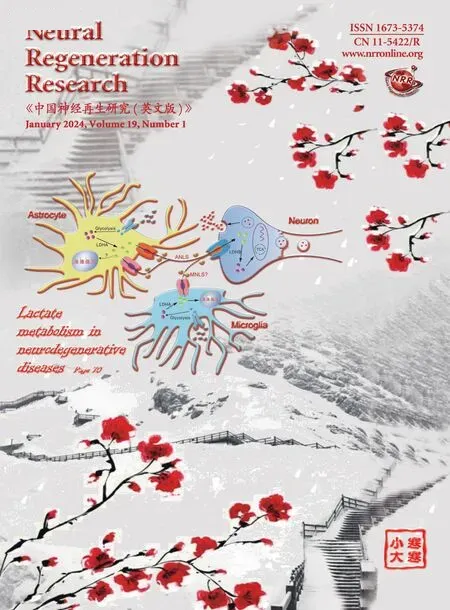中国神经再生研究(英文版)
Editorial
Reviews
- Adult neurogenesis: a real hope or a delusion?
- Type-B monoamine oxidase inhibitors in neurological diseases: clinical applications based on preclinical findings
- The future of artificial hibernation medicine: protection of nerves and organs after spinal cord injury
- Are TrkB receptor agonists the right tool to fulfill the promises for a therapeutic value of the brain-derived neurotrophic factor?
- Pharmacological interventions targeting the microcirculation following traumatic spinal cord injury
- Metabolic and proteostatic differences in quiescent and active neural stem cells
- Mesenchymal stem cell-derived extracellular vesicles as a cell-free therapy for traumatic brain injury via neuroprotection and neurorestoration
- Pathological and therapeutic effects of extracellular vesicles in neurological and neurodegenerative diseases
- Emergence of taurine as a therapeutic agent for neurological disorders
- Lactate metabolism in neurodegenerative diseases
- Pathogenic and therapeutic role of exosomes in neurodegenerative disorders
- Impact of apolipoprotein E isoforms on sporadic Alzheimer’s disease: beyond the role of amyloid beta
- Understanding the spectrum of non-motor symptoms in multiple sclerosis: insights from animal models
- The concept of gene therapy for glaucoma: the dream that has not come true yet
- Biomaterials-based anti-inflammatory treatment strategies for Alzheimer’s disease
- Contribution of glial cells to the neuroprotective effects triggered by repetitive magnetic stimulation:a systematic review
- SIRT2 as a potential new therapeutic target for Alzheimer’s disease
- Strategies for translating proteomics discoveries into drug discovery for dementia
- Clinical associations of corneal neuromas with ocular surface diseases
Perspectives
- Novel emphasis on somatostatinergic system in retinal ganglion cell neuroresilience
- Consequences of early life stress on the structure and function of the adult mouse retina
- Tau’s function and dysfunction in the brain: when small changes have big consequences
- Advanced brain organoids for neuroinflammation disease modeling
- Beyond dentistry: could prevention and screening for neurodegenerative diseases start in the dental office?
- A cup of coffee for a brain long life
Commentary
Research Articles
- Spi1 regulates the microglial/macrophage inflammatory response via the PI3K/AKT/mTOR signaling pathway after intracerebral hemorrhage
- Transcriptomic and bioinformatics analysis of the mechanism by which erythropoietin promotes recovery from traumatic brain injury in mice
- Photobiomodulation inhibits the expression of chondroitin sulfate proteoglycans after spinal cord injury via the Sox9 pathway
- Chemokine platelet factor 4 accelerates peripheral nerve regeneration by regulating Schwann cell activation and axon elongation
- CHCHD2 Thr61Ile mutation impairs F1F0-ATPase assembly in in vitro and in vivo models of Parkinson’s disease
- The MORC2 p.S87L mutation reduces proliferation of pluripotent stem cells derived from a patient with the spinal muscular atrophy-like phenotype by inhibiting proliferation-related signaling pathways
- Increasing β-hexosaminidase A activity using genetically modified mesenchymal stem cells
- Morphological disruption and visual tuning alterations in the primary visual cortex in glaucoma (DBA/2J) mice
- Progress in neurorehabilitation research and the support by the National Natural Science Foundation of China from 2010 to 2022

